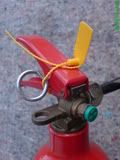I’ve been asked to cast an eye over the June National operator CPC case study, so here are the thoughts of Dave on the likely questions you might face.
It’s all a bit of a lottery and I won’t pretend to offer a comprehensive answer, so anybody’s guess is as good as mine, but remembering that the case-study questions should be asking you about subjects covered in the pre-release material, here goes with my guesses…
First up, here’s the June case-study pre-release material:
Link to June 2011 Nat CPC case study scenario
![]()
![]()
My thanks go to beefy4605 for pointing this out to me
Western Traffic Area is
Areas covered:
The Counties of Cornwall, Devon, Dorset, Gloucestershire, Hampshire, Oxfordshire, Somerset and Wiltshire; the Districts of Bath and North East Somerset, Bournemouth, Bracknell Forest, Bristol, Isle of Wight, North Somerset, Plymouth, Poole, Portsmouth, Reading, Slough, Southampton, South Gloucestershire, Swindon, Torbay, West Berkshire, Windsor and Maidenhead and Wokingham.
Questions here might relate to the procedure for the major change, so it might be an idea to read up on the process.
All the depots mentioned in the case study are in the same Traffic Area, hence it’s a major change and not a new ‘O’ licence application to another Traffic Area.
They’ve also left the way open for them to ask for an organisational chart for who reports to whom.
The assistant and the mechanic at Shepton Mallet will be on different levels to the rest of the staff there, but the assistant reports to you!
Don’t forget to add one other person (a DGSA) to your “future plans.”
(Please see the ADR part at the end of this post.)
‘O’ licence review.
I’d say you might to need to think in terms of answers about something proactive to say to the TC at the review, as well as things that you will already have in place so as to have made your mark on the OCRS score of the operation before the review. TCs like to see that you mean business.
Suggestions: Re-train fitters, retrain drivers on drivers’ hours, use outside tacho-analysis, updated forward planning, updated daily walk-around check sheet and training of drivers to ensure that the new procedure is correctly followed, voluntary reduction of safety inspection interval.
![]() Don’t miss a trick with the ‘margin’ and readily available finances needed for the vehicles to be kept at the new Winscombe depot.
Don’t miss a trick with the ‘margin’ and readily available finances needed for the vehicles to be kept at the new Winscombe depot.
The convictions and PG9s mentioned in the case study are all reportable to the TC, but the HMRC investigation isn’t reportable, unless there’s a conviction received as an outcome.
Watch for the usual questions on costings, drivers’ hours and route planning.
My tip here is to note the distances and drivers’ hours needed, then have a play with some figures for the various vehicles on the various routes just for practice so that you’re prepared for the questions that will almost certainly be coming your way.
Beware of the effects of the “future plans” part of the scenario and think about finances and maintenance.
Please remember that the planning permission already obtained isn’t the same as the permission needed to operate the new depot from the TC. Also worthy of a reminder is a re-read of the procedure for placing the required adverts a sufficient time in advance and keeping whole page copies of the adverts to show the TC.
The ADR part shouldn’t be too scary, because there’s nothing specific such as a UN Class or a UN number mentioned, so the possible questions stemming from the snippet they’ve provided shouldn’t be too difficult. (I’ll come back to this later, please see below.)
Since “promoting from within and additional entitlements” have been mentioned, it might be an idea to learn the main points mentioned by ROG at the bottom of the second-to-last post in this topic:
Failed again - #13 by rog - NEW AND WANNABE DRIVERS (INTERACTIVE) - Trucknet UK
The staff handbook ‘tweak’ will need to show that records of disciplinary meetings will be kept in order to show that a procedure used for discipline/dismissal is fair.
Here are my thoughts on the ADR part of the case study.
The case-study:
They will be used on general haulage work and on contracts to carry packaged dangerous goods in loads that will be fully regulated.
Since we know that the load will be subject to full ADR requirements ( = it’s fully “in scope”) the ADR part of this is pretty straightforward and I doubt there’ll be any ADR load calculations to be performed. ![]()
So, what questions might they ask?
Documentation.
List x documents to be carried on board the vehicle.
- An ADR compliant transport document
- Instructions In Writing (consisting of four A4 sides and kept in an accessible place in the cab)
- The (original) driver’s ADR certificate (valid for at least packages and UN Class 3)
- An acceptable form of photographic ID relating to the driver.
NOTE: The vehicle used for this job does NOT require an ADR certificate of approval.
List x requirements for an ADR compliant transport document:
- The UN number (preceded by the letters “UN”)
- The Proper Shipping Name (PSN) of the goods
- The UN Class of the goods
- The packing group (using Roman numerals.)
- The number and description of the packages
- The total quantity loaded on the vehicle
- The names and addresses of the consignor AND consignee
- The tunnel restriction code IN BRACKETS (but only if passage is known to go through a tunnel subject to dangerous goods restrictions)
![]() They haven’t mentioned a route which passes through a road tunnel, so the tunnel restriction code won’t be needed on the transport document for this journey.
They haven’t mentioned a route which passes through a road tunnel, so the tunnel restriction code won’t be needed on the transport document for this journey.
OCR will need to appoint a Dangerous Goods Safety Advisor (DGSA.)
A DGSA can be the owner, the boss, the TM, another person employed by the company, or a person not directly employed by the company, such as a consultant. In any case, the appointed DGSA can only be a person properly qualified by passing the relevant SQA examinations. There are no grandfather rights. There are no exemptions available to the OCR operation in this case. As TM, I’d advise that you should ask to see the DGSA’s certificate.
List x DGSA’s duties.
- monitoring compliance with the requirements governing the carriage of dangerous goods;
- advising on the carriage of dangerous goods;
- preparing an annual report to the management on their activities in the carriage of dangerous goods.
(Management MUST retain these reports for 5 years AND produce them to the Police, VOSA or the HSE if requested.) - verification of proper procedures for identifying dangerous goods.
- verification that persons have had training appropriate to their duties
- preparing reports of serious incidents or infringements for forwarding to the DfT.
- verification that a company has appropriate equipment for the carriage of dangerous goods.
- verification of proper emergency procedures in case of an incident involving dangerous goods.
Vehicle markings.
This requirement is very straightforward…
An ‘in scope’ 40t vehicle requires two PLAIN reflectorised orange coloured plates, one to be placed on the front of the vehicle, and one to be placed on rear of the vehicle. The size of the orange coloured plates is 40cm X 30cm
The two orange plates must be removed or effectively covered once the vehicle has been unloaded.
NO OTHER VEHICLE MARKINGS ARE REQUIRED and a front plate is NOT required to be displayed on the front of an uncoupled trailer.
 .
.
Fire extinguishers.
Fire-extinguisher compliance rules:
- Extinguishers must be of an approved type ie. the Kite Mark or the CE mark.
- Extinguishers must be periodically inspected (annually in the UK) and bear a label / sticker showing the next due date of inspection, or the maximum period of use.
- Extinguishers must be fitted with a seal AND pin.
- Extinguishers must be protected from the effects of the weather.
- Extinguishers must be easily accessible.

The seal must pass through the pin to show that the pin hasn’t been withdrawn.
An “in scope” 40t vehicle will need a minimum of 1 X 2kg dry powder fire extinguisher:

AND
1 X 10kg fire extinguisher to make a total minimum of 12kgs

Therefore, a minimum of two fire extinguishers will be needed per vehicle.
An “in scope” 40t vehicle will need the following equipment on board as a minimum:
List x items of equipment required to be on board the vehicle
- a suitable wheel chock
- two self-standing warning signs (These can be cones, triangles or amber flashing lights etc.)
- eye rinsing liquid (eye-wash.)
(Eye wash NOT needed for UN Classes 1 or 2.)
Additional compulsory equipment for the carriage of UN Classes 3, 4.1, 4.3, 8 &9:
- a shovel
- a drain seal
- a plastic collecting container
Additional compulsory equipment for the carriage of UN Classes 2.3 and 6.1:
A suitable emergency escape mask (= respirator.)
Each person on board an “in scope” 40t vehicle must have:
List x items of PPE (per person.)
- a warning vest ( = Hi-Viz)
- portable lighting apparatus (a torch)
- a pair of protective gloves
- eye protection (e.g. protective goggles.)
Markings on the packages.
The four-digit UN number of the substance must be shown on each package, preceded by the letters “UN.”
1 X [proper] UN Class label (100mm X 100mm) per package.
(Unless it’s an IBC, which needs two labels.)
Example:

Now we come to my usual tips for giving a good answer:
Please spend a few moments to read the questions before putting pen to paper, so that you have the overview of where it’s all heading.
The questions often contain massive clues, such as:
If you see the word “list” in the question, then PLEASE simply write a list.
- x
- y
- z
You will lose marks for not following a clear instruction given in the question if you write anything other than a list.
If you see the words “explain,” then keep it short and please don’t ramble, whilst making absolutely sure that the answer you give actually adresses the question. That type of question usually contains the word “briefly,” so brevity is what they’re looking for.
If you see “give X (number) of reasons,” then they looking for that number of reasons for something.
There’s no point writing an excessive number than that asked for, but with the best reasons buried somewhere near the end. The people who mark the exams will have been told to ONLY look at the number of reasons asked for. They will ignore the rest, so please don’t waste valuable exam time.
My tip here is to think of as many as you can, but pick only the best ones to write as your answers.
If you’re still awake after reading this, could I ask you to please try and remember some of the questions asked, because posting them here might assist me to help future candidates.
Thanks in advance guys, and the very best of luck to everybody attempting the exams. ![]()
Massive thanks to beefy4605. 